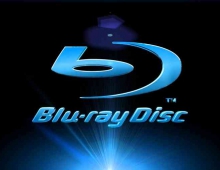
DVD and Blu-ray Still Drive Home Entertainment Revenue
Despite rapid device adoption, and new forms of movie distribution, video discs are by far the largest source of Hollywood's home-video revenue, the NPD Group says.
Sales of Blu-ray discs and DVDs remain the largest source of revenue for the movie industry, accounting for 61 percent of home-video spending on movies (excluding Netflix and other movie-streaming subscriptions) in 2012, the research group announced. The previous year the Blu-ray and DVD movie share was 64 percent; NPD attributes some of the share decline to lower average prices paid for Blu-ray discs, which fell 7 percent to reach $19.97 per unit.
"There is a significant base of video customers in the U.S. who continue to be comfortable with physical formats, and a large majority haven't made the complete transition from discs to digital video," Crupnick said. "For the time being, at least, consumers still like to own and rent movies and TV shows on DVD and Blu-ray, even in a world of where connected devices and digital rental, streaming, and ownership options are becoming more accepted and commonplace."
According to NPD, the digital-video market for movies is indeed growing -- accounting for 16 percent of consumer expenditures, which is an increase of 2 percentage points over 2011. Pay-TV video on demand (VOD) movies from cable, satellite, and telco operators also rose 1 percent to reach a 12 percent share of revenues.
NPD reports on several categories of digital on-demand movies that are purchased or rented as individual transactions (e.g. not subscriptions). VOD rentals from pay-TV operators accounted for 72 percent of transactional VOD movie rental revenue. Electronic sell through (EST) of movies, which is widely seen to be the next generation video-ownership option, showed strong growth in 2012; however, EST remains a relatively small segment of the industry, comprising just 16 percent of VOD revenue., Internet VOD, or iVOD comprised 12 percent of transactional VOD revenue. Whereas iTunes dominates the market for movie EST, and Netflix leads the subscription streaming market, there is more competition for iVOD rentals.
DVD and Blu-ray Disc rentals from Redbox and other kiosk companies comprised nearly half of all physical disc movie rentals in 2012, rising 8 percentage points over the prior year to encompass nearly half (46 percent) of the market. Subscription disc rental?s share of disc rentals fell 5 percentage points to 32 percent, as Netflix focused on the streaming side of its business. Movie rentals from brick-and-mortar stores fell 2 percentage points, and now represent less than a quarter of all video-rental volume.
Television programming is also having quite an effect on the home-video footprint. According to NPD's "VideoWatch Digital" consumer tracker, 80 percent of Netflix Watch Instantly rental transactions were TV shows, while in the EST arena, 90 percent of the transactions were TV programs.
"In the market for television content, Netflix has amassed a strong slate of popular programs, including Breaking Bad and The West Wing, all of which capitalize on time-shifting behavior because they immerse the viewer for shorter timeframes than full-length movies do," said Crupnick. "As long as TV content remains compelling and easily available, we can expect to see that sector of home video expand."
"There is a significant base of video customers in the U.S. who continue to be comfortable with physical formats, and a large majority haven't made the complete transition from discs to digital video," Crupnick said. "For the time being, at least, consumers still like to own and rent movies and TV shows on DVD and Blu-ray, even in a world of where connected devices and digital rental, streaming, and ownership options are becoming more accepted and commonplace."
According to NPD, the digital-video market for movies is indeed growing -- accounting for 16 percent of consumer expenditures, which is an increase of 2 percentage points over 2011. Pay-TV video on demand (VOD) movies from cable, satellite, and telco operators also rose 1 percent to reach a 12 percent share of revenues.
NPD reports on several categories of digital on-demand movies that are purchased or rented as individual transactions (e.g. not subscriptions). VOD rentals from pay-TV operators accounted for 72 percent of transactional VOD movie rental revenue. Electronic sell through (EST) of movies, which is widely seen to be the next generation video-ownership option, showed strong growth in 2012; however, EST remains a relatively small segment of the industry, comprising just 16 percent of VOD revenue., Internet VOD, or iVOD comprised 12 percent of transactional VOD revenue. Whereas iTunes dominates the market for movie EST, and Netflix leads the subscription streaming market, there is more competition for iVOD rentals.
DVD and Blu-ray Disc rentals from Redbox and other kiosk companies comprised nearly half of all physical disc movie rentals in 2012, rising 8 percentage points over the prior year to encompass nearly half (46 percent) of the market. Subscription disc rental?s share of disc rentals fell 5 percentage points to 32 percent, as Netflix focused on the streaming side of its business. Movie rentals from brick-and-mortar stores fell 2 percentage points, and now represent less than a quarter of all video-rental volume.
Television programming is also having quite an effect on the home-video footprint. According to NPD's "VideoWatch Digital" consumer tracker, 80 percent of Netflix Watch Instantly rental transactions were TV shows, while in the EST arena, 90 percent of the transactions were TV programs.
"In the market for television content, Netflix has amassed a strong slate of popular programs, including Breaking Bad and The West Wing, all of which capitalize on time-shifting behavior because they immerse the viewer for shorter timeframes than full-length movies do," said Crupnick. "As long as TV content remains compelling and easily available, we can expect to see that sector of home video expand."




















